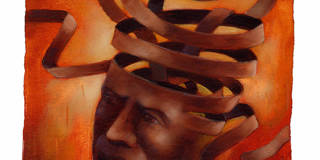Psychiatry’s Conceptual Malpractice
The American Psychiatric Association’s official diagnostic manual – the DSM, often called the “bible of psychiatry” – in effect defines what is psychologically normal and abnormal in the US and, increasingly, in much of the rest of the world. But proposed changes to the DSM's next edition may serve to discredit psychiatric diagnosis as much as to improve it.
NEW YORK – The American Psychiatric Association’s recent proposed changes to its official diagnostic manual – the Diagnostic and Statistical Manual of Mental Disorders (“DSM”), often called the “bible of psychiatry” – may discredit psychiatric diagnosis more than improve it. The DSM specifies the symptoms by which every mental disorder is diagnosed, in effect defining what is psychologically normal and abnormal in the United States – and, increasingly, for much of the rest of the world as well.
Revising the DSM’s diagnostic criteria for the upcoming fifth edition (“DSM-5”) is a heavy responsibility. Draw the line between normality and disorder too broadly, and individuals may suffer incorrect diagnoses and undergo needless and potentially harmful treatment. Indeed, the DSM’s history reveals many such errors of over-inclusiveness.
But if the line is drawn too narrowly, individuals may not get needed help. Although psychiatrists tend to worry more about identifying potential patients in need of help and less about eliminating normal eccentricity and distress from diagnosis, it is crucial in any society that respects human variation and encourages individual moral responsibility to distinguish normal suffering and eccentricity from mental disorder.



NEW YORK – The American Psychiatric Association’s recent proposed changes to its official diagnostic manual – the Diagnostic and Statistical Manual of Mental Disorders (“DSM”), often called the “bible of psychiatry” – may discredit psychiatric diagnosis more than improve it. The DSM specifies the symptoms by which every mental disorder is diagnosed, in effect defining what is psychologically normal and abnormal in the United States – and, increasingly, for much of the rest of the world as well.
Revising the DSM’s diagnostic criteria for the upcoming fifth edition (“DSM-5”) is a heavy responsibility. Draw the line between normality and disorder too broadly, and individuals may suffer incorrect diagnoses and undergo needless and potentially harmful treatment. Indeed, the DSM’s history reveals many such errors of over-inclusiveness.
But if the line is drawn too narrowly, individuals may not get needed help. Although psychiatrists tend to worry more about identifying potential patients in need of help and less about eliminating normal eccentricity and distress from diagnosis, it is crucial in any society that respects human variation and encourages individual moral responsibility to distinguish normal suffering and eccentricity from mental disorder.